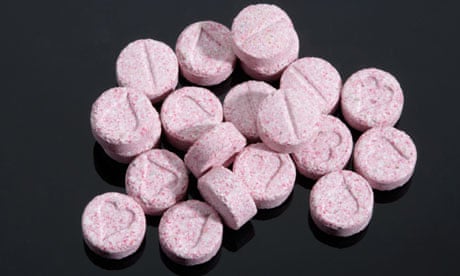Last week, an inquest into the death of Travis Barber, a 19-year-old gym instructor from Salford Greater Manchester, highlighted the danger of a drug called PMA. Then, at the weekend, another teenager – 15-year-old Martha Fernback – died in Oxford. Although it is far too early to say what caused Fernback's death, police have said that she took a drug she believed to be ecstasy. But, according to reports, her friends have said that it was PMA. A number of other recent deaths have been linked to the drug, including those of seven young people in Scotland in the last few months. As a recent piece on PMA in the dance music publication Mixmag put it: "This is not just another drug scare story."
PMA is already a class-A drug; but is it much more dangerous than other illegal substances? "If you compare it to MDMA-related deaths, far fewer people are taking PMA, and there does seem to be the suspicion that people are disproportionately affected," says Harry Sumnall, professor in substance use at the Centre for Public Health at Liverpool John Moores University.
PMA – the common name for paramethoxyamphetamine – is usually sold in pill form, sometimes stamped with a crown, or M and sometimes pink (hence the nickname "pink ecstasy"). People who take PMA often believe they are taking ecstasy. The drug's effects are similar but they can take up to an hour to be felt, so users may take another pill in the mistaken belief that the first has not worked, resulting in a massive dose.
"PMA is a potent releaser of serotonin," says Sumnall. "It also prevents the reuptake of serotonin back into neurons and inhibits the enzymes which are responsible for the breakdown of serotonin. This increase in serotonin, especially when PMA is taken in combination with other drugs, can lead to hyperthermia and subsequently, organ failure. Basically people are overheating and collapsing."
PMA is believed to have been first identified in the United States in the early 1970s. The drug soon became controlled and, says Sumnall, "pretty much disappeared. It then reappeared in the mid-1990s in Australia and there were a few deaths associated with it, then it disappeared again. Now it seems to have reappeared in northern Europe, but particularly in the UK."
Sumnall adds that other countries, such as the Netherlands, are not reporting deaths associated with PMA. "The Dutch have localised drug testing. Perhaps the distributors think the UK market is less discriminatory." In Britain, he says, "we don't have an effective, localised early-warning system that predicts the arrival of these sorts of drugs. Most of the warnings come after someone has died, which is too late. We don't allow localised tablet testing, where users can identify harmful tablets. It's difficult to know, without a major change in the law, how we're going to implement an effective response to drugs such as PMA."

Comments (…)
Sign in or create your Guardian account to join the discussion